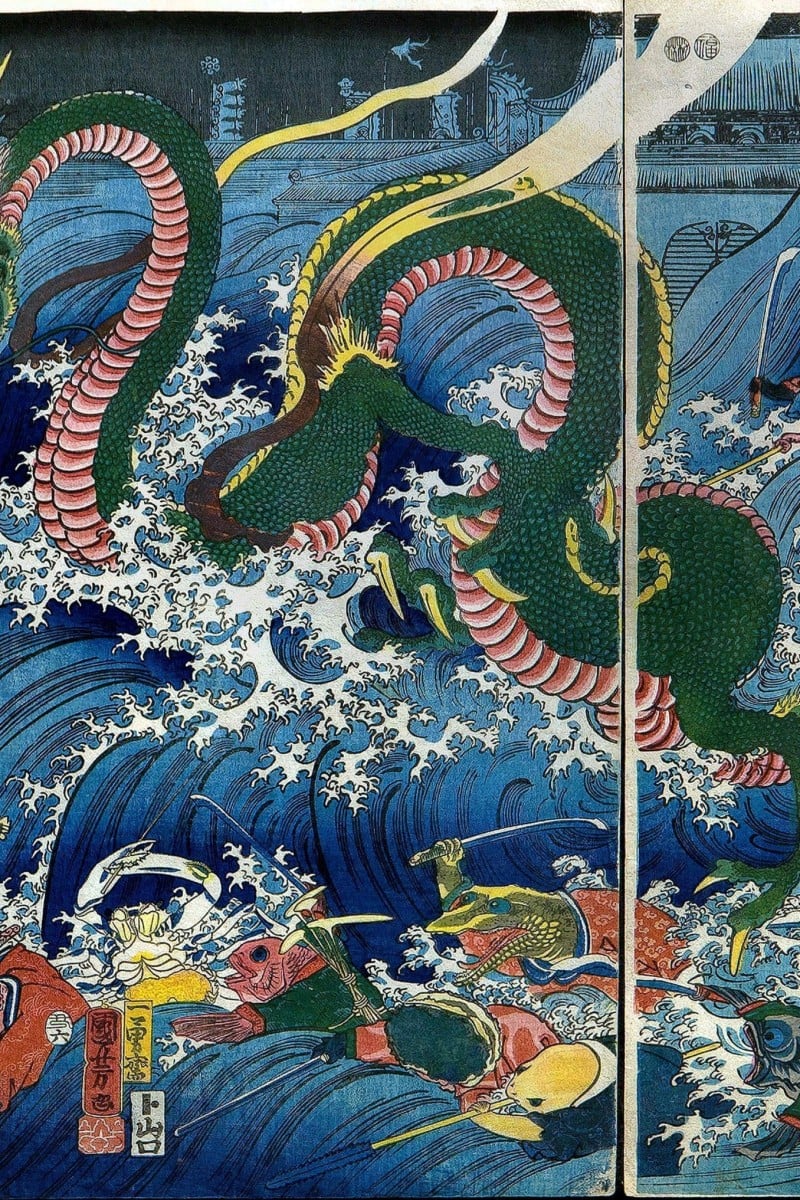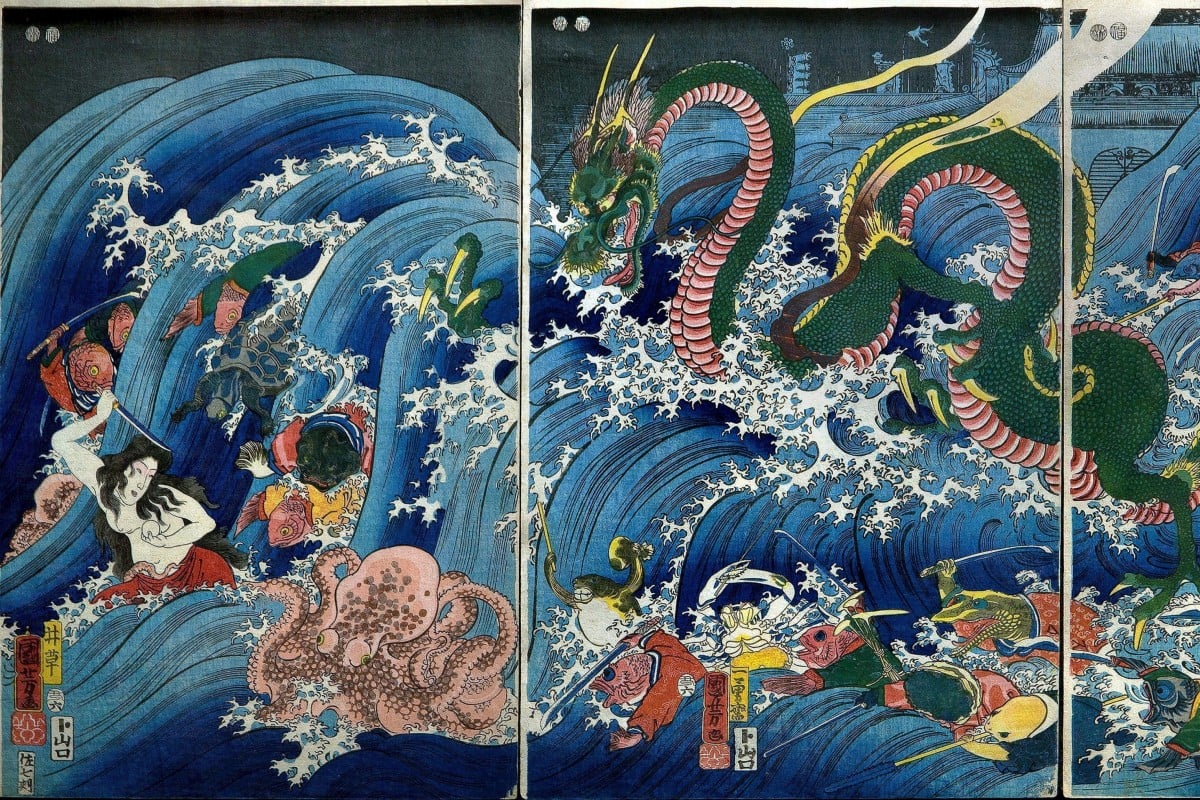
Study Buddy (Explorer): From China to Scandinavia, there’s a diversity of dragon culture around the world
- As we get closer to the start of the Year of the Dragon, we take a look at how several cultures around the world revere the mythical beasts
- Each week, this page presents an interesting story that we have adjusted to be more accessible for all English learners
 Dragons are revered in several cultures around the world. Photo: Getty Images
Dragons are revered in several cultures around the world. Photo: Getty ImagesContent provided by British Council
Read the following text, and answer questions 1-9 below:
[1] The dragon is the ultimate symbol of power, fortune and prosperity in Chinese culture. That’s why the Year of the Dragon is seen by many as special and auspicious. But Chinese culture is not alone in revering dragons.
The Chinese dragon
[2] The Chinese nation calls itself the descendant of the dragon. According to one ancient myth, the powerful snake tribe defeated the other eight and in doing so claimed their totems – deer, camel, rabbit, clam monster, fish, eagle, tiger and cow – to form the image of the dragon.
[3] Dragon culture in China reached its peak in the Qing dynasty (1644-1911). In Chinese feudal society, the dragon represented imperial power, and dragon motifs were reserved for the royal family. The number of claws a dragon could have varied according to imperial ranks: only emperors were worthy of five-claw golden dragon motifs, while princes had to make do with four.
[4] Dragon motifs on different parts of the same robe carried different meanings. The dragon’s head on the lapel of the emperor’s robe faced up and represented a flying dragon. It meant that the emperor – like the dragon with its head held high – enjoyed the support of the people.
The Welsh dragon
[5] A red dragon is a symbol of victory and courage in Welsh culture. In the 12th century, the legend of King Arthur mentioned two giant red and white dragons. The red one represented the Celts of Wales, while the white one represented the Saxons of England. The two dragons fought each other and, in the end, the red dragon drove away the white dragon.
The Nordic dragons
[6] There are multiple legends about dragons in Scandinavian culture. Dragons usually symbolise terror, destructiveness and greed. One famous Scandinavian dragon is Fafnir. This is a giant dragon from Norse mythology. It has sharp, curved claws, wings and scales that cannot be penetrated by ordinary weapons – and it can breathe fire. Fafnir guarded a pile of treasure and was eventually defeated by the hero Sigurd.
The Japanese dragon
[7] Japan’s dragon culture encompasses local and Chinese beliefs. The Japanese dragon is described both as a god associated with rainfall and water and as a symbol of the sea, rivers and mountains. Myths about dragons living in ponds and lakes near temples are widespread in Japan. In war, the dragon also serves as a symbol of victory and protection.
[8] In contrast to the intense bond between dragons and emperors in Chinese culture, the Japanese dragon is welcomed by princesses. In Japanese mythology, many stories describe links between dragons and female characters. For example, Kiyohime, the “Purity Princess”, fell in love with a young Buddhist priest. After he cheated her, she studied magic, transformed into a dragon, and killed him.
Source: South China Morning Post, December 15
Questions
1. In paragraph 1, what three things are associated with the dragon in Chinese culture? (3 marks)
___________________________________________________
2. Which of the following is not one of the “other eight” tribes mentioned in paragraph 2?
A. snake
B. cow
C. rabbit
D. clam monster
3. According to paragraph 3, which was the only group of people that could use the image of a dragon in China?
___________________________________________________
4. Find a phrase in paragraph 3 that means “to manage with something that is not really good enough”.
___________________________
5. In paragraph 4, what does the flying dragon mean?
______________________________________________________________________________________________________
6. Decide whether the following statements in paragraphs 5 and 6 are True, False or the Information is Not Given. (4 marks)
(i) The white dragon is seen as a sign of victory in Welsh culture.
(ii) King Arthur defeated a white dragon in the 12th century.
(iii) In Scandinavian culture, dragons are usually seen as evil.
(iv) Sigurd defeated Fafnir with a magical sword that could cut through its wings.
7. According to paragraph 7, where do Japanese people believe dragons live?
______________________________________________________________________________________________________
8. What is the similarity between the dragons in Welsh and Japanese culture according to paragraphs 5 and 7?
______________________________________________________________________________________________________
9. In paragraph 9, Kiyohime …
A. is the daughter of a dragon.
B. turned into a dragon.
C. fell in love with a dragon.
D. none of the above
Answers
1. power, fortune and prosperity
2. A
3. the royal family
4. make do
5. It means that the emperor, like the dragon with its head held high, enjoyed the support of the people.
6. (i) F; (ii) F; (iii) T; (iv) NG
7. They live in ponds and lakes near temples.
8. Both cultures see dragons as a symbol of victory.
9. B
